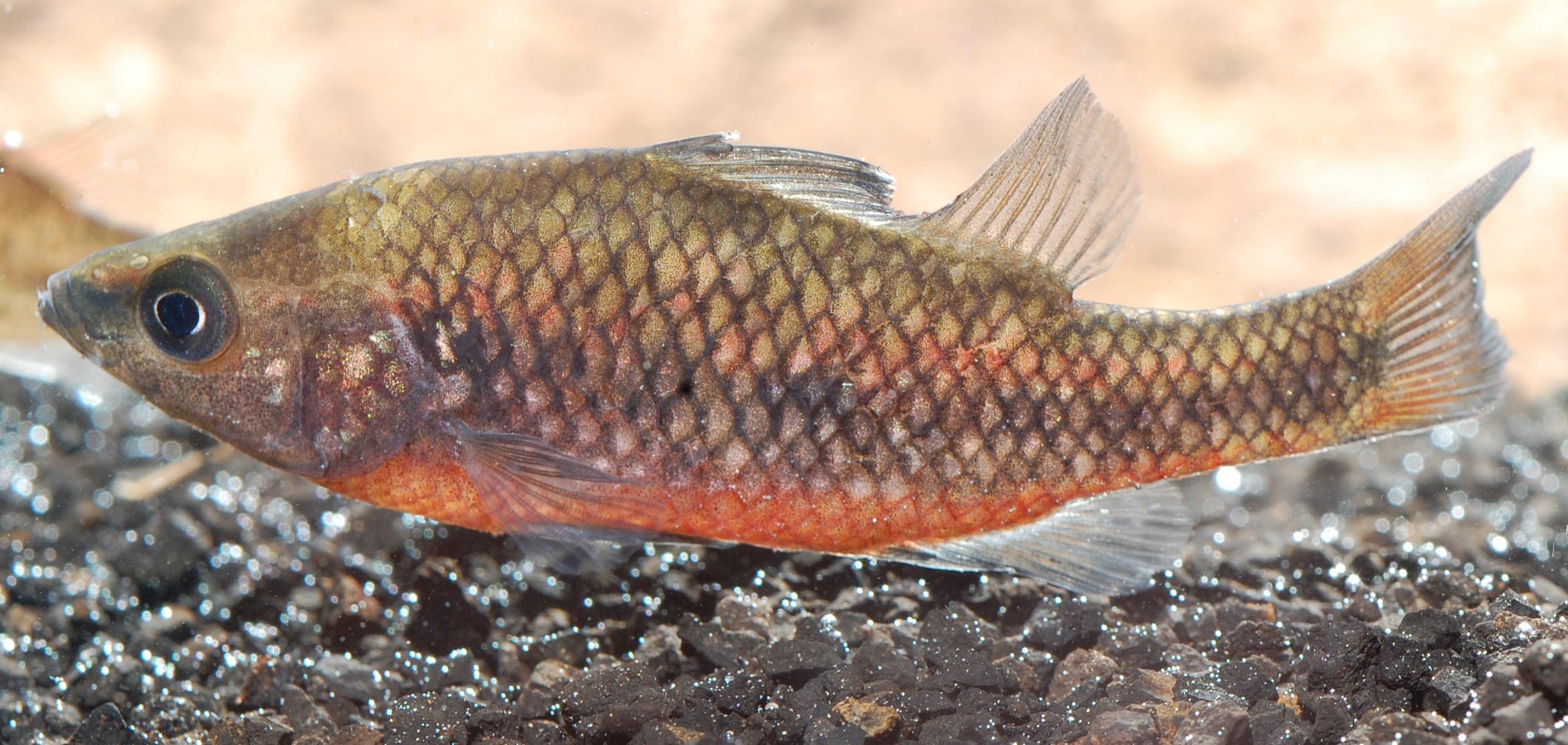
Edelia vittata
FAMILY
Percichthyidae
TAXONOMY
Edelia vittata Castelnau, 1873, Western Australia.
OTHER COMMON NAMES
German: Westaustralischer Zwergbarsch.
PHYSICAL CHARACTERISTICS
Total length less than 2.75 in (7 cm). Body small and somewhat
ovate to elongate. Mouth small, caudal fin relatively
large and rounded. Color is mottled, variably olive, brown, or
gold with two orange stripes on the flank and a whitish belly.
Males assume darker colors dorsally, fins become blackish,
flanks mottled gold, and orange stripes deepen during breeding
season. Females also change color somewhat during
breeding season, assuming a bluish tinge over the bodies.
Lateral line interrupted and interspersed with tubed scales.
There are 7–9 spines and 8–9 soft rays in the dorsal fin, 3
spines and 6–8 soft rays in the anal fin, and 11–13 soft rays in
the pectoral fin.
DISTRIBUTION
Endemic to the southwestern part of Western Australia; common
in a number of coastal drainages, from the Philipps River
near the city of Albany, north to the Arrowsmith River, about
186 mi (300 km) north of Perth.
HABITAT
Occurs in a variety of permanent water bodies and is somewhat
tolerant of slightly brackish or tannin-stained, as well as clear,
waters. Shelters in aquatic vegetation along the shorelines of
lakes, ponds, wetlands, rivers, and creeks.
BEHAVIOR
Generally solitary in close association with benthic algae.
FEEDING ECOLOGY AND DIET
Carnivore; feeds on benthic microcrustaceans, and adult and
larval insects.
REPRODUCTIVE BIOLOGY
Becomes mature after the first year and lives for about five years.
Migrates into smaller tributary creeks or submerged floodplains
to spawn between July and November. Females lay demersal
eggs in small batches for several weeks during the season.
CONSERVATION STATUS
Not listed by the IUCN, but its relatively limited geographic
DISTRIBUTION
could make it vulnerable to habitats destruction.
SIGNIFICANCE TO HUMANS
May be collected as an aquarium fish and also used to control
aquatic insects such as mosquitoes.
Other popular Animals
Photo Gallery of - Western pygmy perch

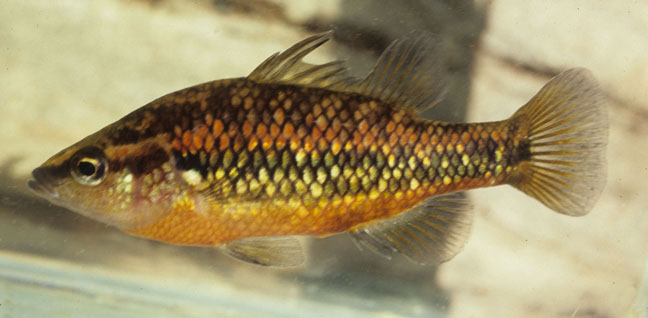
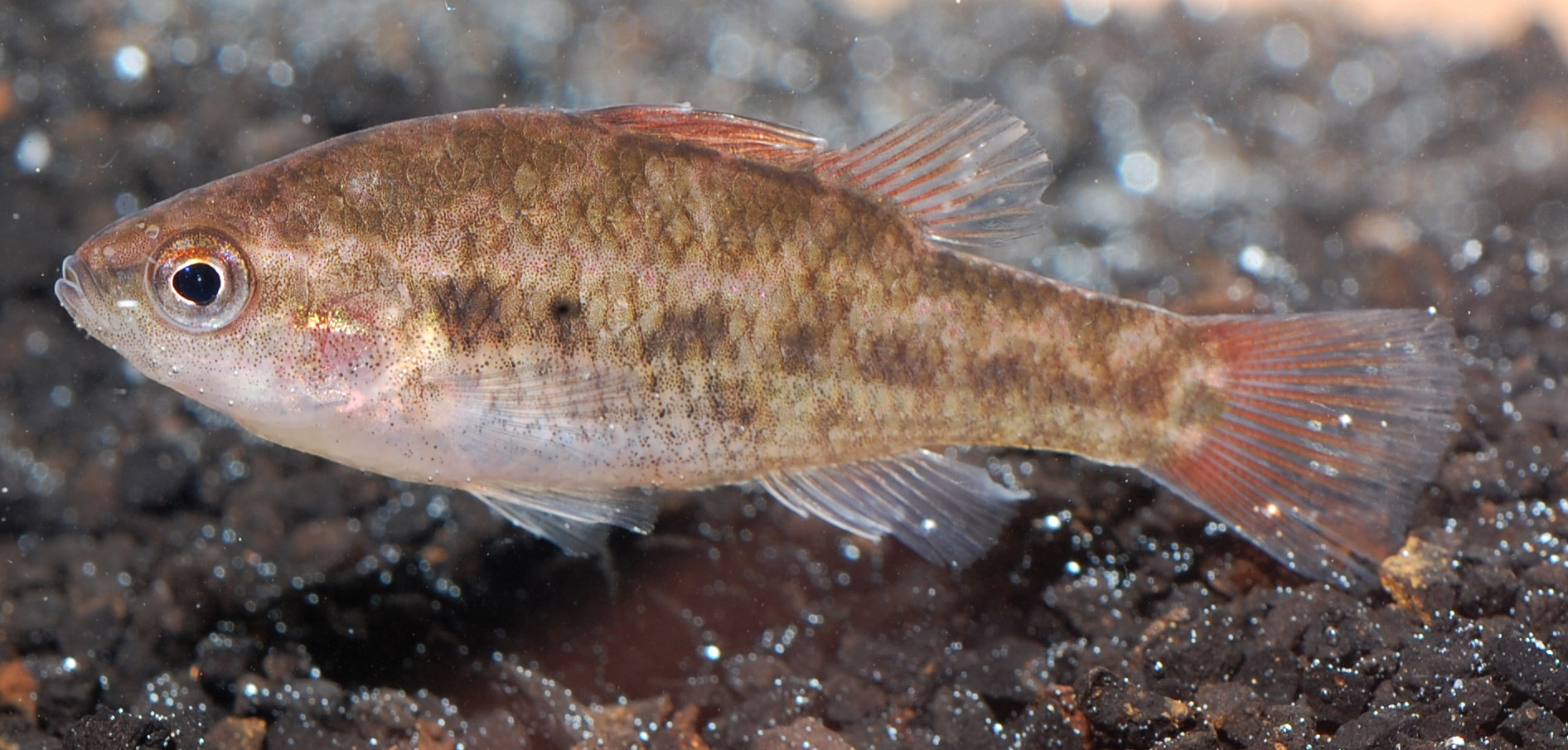
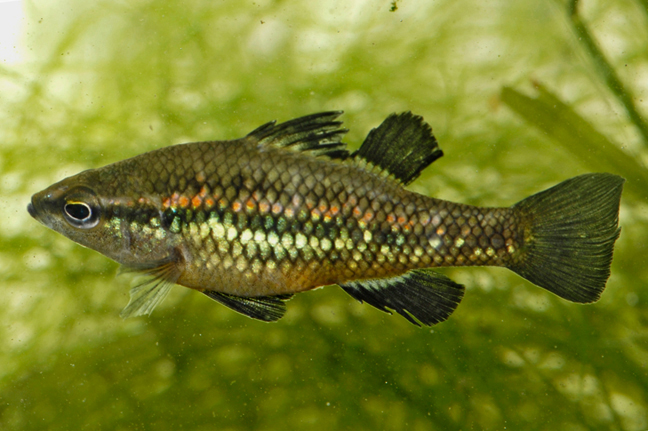
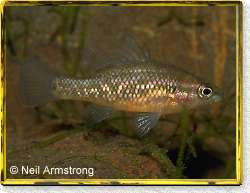
 Animalia Life
Animalia Life